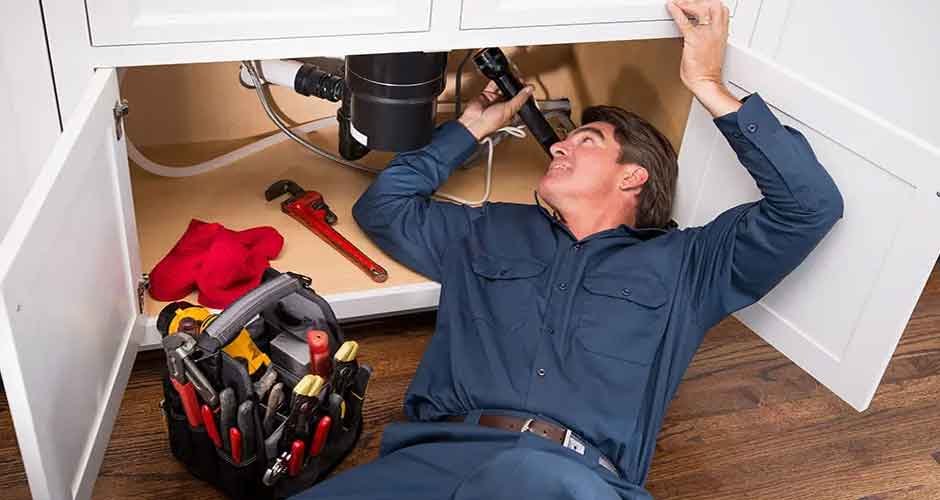High-pressure drain cleaners, often called hydro-jetters, have become popular in the vast arsenal of tools available for cleaning and unclogging drains. Professionals and homeowners alike utilize them to address stubborn blockages according to grease-cycle.com. But do they genuinely work? Let’s delve into the mechanics, benefits, and limitations of high-pressure drain cleaning.
Understanding the Mechanism
At its core, a high-pressure drain cleaner uses the force of water to clear obstructions. It implicates a high-pressure hose with specialized nozzles linked to a machine pressuring the water. This water jets out with considerable force when released, breaking apart even the most stubborn blockages, including tree roots, grease, and accumulated debris. The process clears blockages and cleans the pipe’s inner walls, extracting potential buildup.
Advantages of high-pressure drain cleaning
1. Efficiency in Dealing with Stubborn Blockages
One of the standout benefits of hydro-jetters is their ability to handle challenging obstructions. Traditional methods, like drain snakes, might only sometimes be effective against certain types of blockages, like thick tree roots or hardened grease. The sheer force of the water in high-pressure cleaning can break through these obstructions, ensuring a thorough cleaning. This efficiency reduces the need for repeated interventions, saving time and resources in the long run.
2. Environmentally Friendly Approach
Unlike chemical drain cleaners, which introduce potentially harmful substances into the environment, high-pressure drain cleaning relies solely on water. This makes it an environmentally friendly option. There’s no risk of chemical residues harming the environment or contaminating water sources. Moreover, by avoiding chemicals, the integrity and lifespan of the pipes are better maintained, as certain chemicals can be corrosive over time.
3. Comprehensive Cleaning
While the primary goal is to remove blockages, high-pressure drain cleaners offer the added advantage of comprehensive pipe cleaning. The forceful water stream scours the pipe’s inner walls, removing potential buildup. This ensures a clear passage for wastewater and prevents future blockages. By eliminating the initial layers of accumulation, the chances of blockages forming shortly are significantly reduced.
4. Limitations and Considerations
Despite their evident benefits, high-pressure drain cleaners aren’t without limitations. They mandate the skill to operate efficiently. An inexperienced user might not achieve the desired results or could potentially damage the pipes. Additionally, these systems might not be suitable for older, fragile plumbing systems. The force of the water, if not calibrated correctly, can usher pipe bursts or further complications.
Furthermore, while hydro-jetters are effective against many types of blockages, certain obstructions might still require alternative methods. For instance, if the blockage is due to a collapsed pipe or a misalignment, merely clearing the obstruction won’t address the root cause. Proper diagnostics are essential to ensure that high-pressure cleaning is the right solution for the problem at hand.
5. Cost Implications
While the effectiveness of high-pressure drain cleaners is notable, they can be more expensive than traditional methods, particularly when employing professionals. The machinery is sophisticated, and its operation requires expertise. Nevertheless, considering their efficiency and the comprehensive cleaning they provide, many homeowners and professionals deem the cost as a worthy investment. Over the period, the reduced need for repeated interventions can usher in overall savings.
6. Safety Considerations
An often overlooked aspect of using high-pressure drain cleaners is the safety factor. The power with which water is expelled can pose risks if not handled correctly. There’s potential for injury if the jet of water accidentally targets someone or if the hose isn’t securely held. Moreover, the pressure buildup can cause blowback, potentially harming the operator or causing water damage in the area. Using protective gear, like gloves and safety goggles, is essential. Additionally, ensuring the equipment is in good working order, without any leaks or malfunctions, can stem unforeseen accidents. It’s always advised to read the equipment manual and perhaps even undergo some basic training before handling such machinery.
7. Water Consumption and Efficiency
While high-pressure drain cleaners are undeniably effective, it’s worth noting their water consumption. These machines utilize significant amounts of water to generate the pressure required to clear blockages. In regions or situations where water conservation is critical, hydro-jetters might need to be more efficient from a water usage standpoint. It’s essential to balance the need for effective drain cleaning with the imperative of water conservation. Some modern machines come with water-recycling features, which can mitigate this concern to a degree, but it’s a factor worth considering in the broader context of resource management.
Hydro-jetting plumbers undoubtedly bring efficiency and thoroughness that some traditional methods might need to improve. Their ability to handle tough blockages and their environmentally friendly nature make them a valuable tool in drain cleaning. Nevertheless, their utility is contingent on the situation. Proper diagnostics, comprehending the nature of the blockage, and the plumbing system’s condition are all paramount factors in determining whether high-pressure cleaning is the ideal solution. When used appropriately, they can work wonders, but like any tool, their effectiveness lies in their judicious application.


